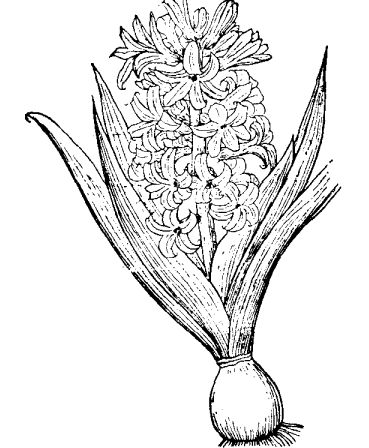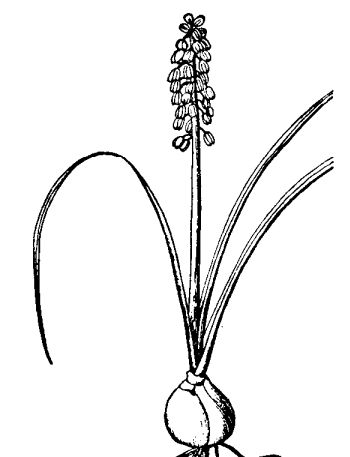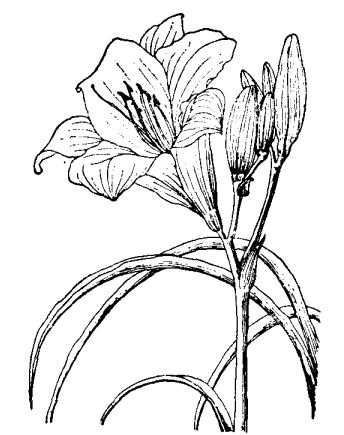Cultivation, propagation and management of hyacinth
[alias] foreign daffodils, colorful daffodils.
Liliaceae, hyacinth genus.
[morphology] perennial herbs, bulbs spherical or oblate, outer capsule purplish blue or white, etc., related to flower color. Leaves 4-6, basal, hypertrophic, banded-lanceolate. Scape 16-45 cm tall, hollow, terminal bearing raceme; florets more than 10-20
Domi gives birth to the upper part. The flowers are fragrant, white, pink, yellow, red, blue and lilac in different shades, single or double. The florescence is from March to April.
[varieties, forms and varieties] there are many varieties, with a variety of colors and double varieties, as well as large and small flowers, early and late flowers, etc. Its important variety, var.42sBaker, has a weak and early plant, each plant can bear several scape and small flowers, so it is suitable for promoting cultivation. Due to climatic conditions, hyacinth is often degraded in many parts of our country, with short plants, inferior flowers, shrinking balls and not easy to be planted well, so there are not many varieties at present.
[origin and distribution] originated in southern Europe, the eastern coast of the Mediterranean and Asia minor. Most of them are planted in the Netherlands and sold as commercial cultivation.
[habits] like cool, moist air, sunny environment, requires well-drained sandy soil, low wet clay soil growth is very poor. It is hardy and overwintering in the open field in Shanghai without protection.
[reproduction] small balls planted in autumn from September to October are not suitable for dividing balls after harvest, because the wound is easy to rot when stored over the summer. In addition, you can cut the base of the big ball or dig a hole on a sunny day in August, blow it in the sun for 2 hours, and then blow a thousand in the flat stall indoors. Many small balls can occur in the cut part of the big ball, which can be planted separately in autumn. In order to cultivate new varieties, it can also be sown and propagated.

Hyacinth likes fertilizer, whether potted or planted on the ground, it is best to apply basic fertilizer adequately, the soil should be loose, and fertilizer is often topdressing during the growth period. Loosen the soil in time after seedling emergence, apply fertilizer once in winter, and fertilize again before and after flowering in spring. It is hot early in early summer in Shanghai, which often causes hyacinth early senescence, which is not conducive to bulb development, so bulbs are reduced and degraded year by year, and it is not easy to cultivate them well. Pot culture promotes the cultivation of bulbs in September and can be planted with general culture soil (garden soil, rice chaff ash and barnyard manure). Four plants are planted in each pot, which are placed in the sun and moved into the greenhouse in November. The room temperature should not be higher than 5-10 ℃, and the flowers can bloom during the Spring Festival. The bulbs must be dried in the shade before storage, otherwise they are perishable.
In the past, aquaculture was often promoted in Shanghai, and it was produced in large quantities every year. When hyacinth promotes cultivation, it should be kept at a lower temperature so that it can grow roots without leaves. Later in the semi-shade and slightly higher temperature, so that the leaves grow at a certain height, and finally give a higher temperature and sufficient sunlight, so that the stems and leaves can be plump and the flowers will flourish.
[purpose] hyacinth plants are low and neat, with bright colors and early flowering period. they are important bulb flowers in spring and are most suitable for cut flowers, flower borders, flower beds or natural cluster planting on the edge of lawn.
Propagation, cultivation and use of grape hyacinth
[alias] grape lily, blue kettle flower, grape musk orchid.
Liliaceae, Liliaceae.
[morphology] perennial herbs, bulb globose, skin white. Leaves basal, linear, slightly fleshy, dark green, margin often curled inward, 10ml 30 cm long and 0.6 cm wide. Scape drawn from foliage, 10 Mel 30 cm high, racemes densely bearing upper part of scape, pedicels pendulous; flowers small, blue. The flowering period is from mid-March to early May.
[varieties, forms and varieties] there are white flowers, fleshy red flowers and light blue varieties.
[Origin and distribution] originated in southern Europe.
[habits] like deep and fertile sandy soil, which requires good drainage. Resistant to semi-overcast and cold. Both East China and North China can survive the winter in the open field without protection.
[breed] seed balls are planted in autumn.
[cultivation] this species has the advantages of strong character, strong adaptability, simple cultivation and management, and planting bulbs in autumn.
[purpose] the plant is short and the florescence is early and long, so it is suitable to be used as flowers under the forest, or in the flower border, lawn and other natural clusters. It can also be used as a potted ornamental or as a cut flower.
Propagation and cultivation methods of hyacinth
Flower name: hyacinth
Latin scientific name: Hyacinthus orientalis L.
Nicknames: foreign daffodils, western daffodils, colorful daffodils, brocade
Families and genera: hyacinth family (Liliaceae), hyacinth genus
Distribution: widely cultivated in the world. It originates in the limestone area above 2600m above sea level along the eastern coast of the Mediterranean Sea and Asia minor. There are many varieties, and now the Netherlands has the largest number of varieties in the world, and it is an extremely important foreign trade commodity like tulips. It is cultivated all over China.
Hyacinth, a perennial herb of the hyacinth genus of the hyacinth family, is bulbous. It used to belong to the Liliaceae, but now it has been promoted to the type genus of the new hyacinth family, and the hyacinth has been changed from the original lily order to the newly established Tianmen winter order. Hyacinth is native to the Mediterranean and South Africa and gets its scientific name from Hyacinthus, a beautiful teenager who was spoiled by Apollo and died by throwing a discus in Greek mythology. The flowers of hyacinth are colorful and fascinating. Especially to the Spring Festival, red, blue, white, purple, yellow, pink hyacinth, fragrant bursts, full of festive atmosphere.
Reproduction method
It is mainly propagated by dividing balls, and it can also be propagated by bulbs. One year after the cue ball was planted, it gave birth to 1-2 seed balls, and each variety could give birth to more than ten seed balls. It can be used for bulb reproduction, which takes 3 years to blossom. The seeds propagate, sow in autumn, germinate in February of the following year, and the seedlings bloom after 4-5 years of culture.
Bulblet reproduction
After the bulb was dug back in June, the big ball and the seed ball were separated. "the big ball can blossom in early spring next year after autumn planting, and the seed ball needs to be cultivated for 3 years before it can blossom. Due to the low natural ball division rate of hyacinth, the mother plant can only divide 2 bulbs after planting for one year. In order to improve the reproduction coefficient, castration can be used to stimulate the bulbs to grow in the summer dormant period. The method is that in August, when the flower bud has been formed, the stem disk at the bottom of the bulb is evenly dug out, so that the wound at the stem disk is concave, and then cut vertically and horizontally from the bottom to the top, showing a cross incision, reaching the center of the bud in the bulb. at this time, mucus will flow out, apply 0.1% mercury solution to smear and disinfect, then expose it in the hot sun for 2 hours, and then spread it indoors. The room temperature is kept at about 21C to produce callus. When the base of the scale expands, the temperature gradually rises to 30C, the relative humidity is 85%, and many small bulbs are formed in about three months. The bulblet culture induced by this method blossomed for 3 ~ 4 years.
Seed propagation
It is often used in the cultivation of new varieties, sowed in the culture soil in the cold bed in autumn, covered with soil of 1 cm, and germinated at the end of January and the beginning of February of the following year. The bulbs cultured from seedlings blossom after 4-5 years. Under general conditions, the germination ability of seeds can be maintained for 3 years.
Cultivation techniques
Hyacinth should choose well drained, not too dry sandy loam, neutral to slightly alkaline, before planting to apply sufficient base fertilizer, field cultivation, avoid continuous cropping. Cultivation methods include open field cultivation, pot cultivation, facilitative cultivation and water culture.
It is suitable to be carried out from October to November, and the selection of soil with good drainage is the most important condition. Before planting, apply enough base fertilizer, add a thin layer of sand, and then line up the bulbs, 15 cm ~ 18 cm apart and 5 cm ~ 8 cm covered with soil. And cover with grass to keep the soil loose and moist. Generally, there is no other management before flowering. If seeds are not to be collected after flowering, the flower stem should be cut off to promote bulb development. The cutting position should be in the uppermost part of the flower stem as far as possible. The bulb roots can be dug up in early June, spread out and stored in cold storage, and the summer temperature should not exceed 28C. Potted plant
With loam, rotten leaf soil, fine sand and other mixed nutrition soil, generally 10 cm diameter potted one ball, 15 cm caliber potted 2cm 3 balls, and then buried in the pot, the overlying soil 10 cm ~ 15 cm, after 7-8 weeks, buds grow to more than 10 cm, go to cover the soil to make the sun shine, generally planted in October-November, flowering in March. Aquaculture
Put clean water in the container in the dark, select a large ball, soak the bottom of the bulb in water, move it to the light when the root is 10 cm long, keep the sunlight at about 15C at room temperature, plant in October, and blossom at the end of the year.
- Prev

Propagation, cultivation and use of grape hyacinth
[alias] grape lily, blue kettle flower, grape musk orchid. Liliaceae, Liliaceae. [morphology] perennial herbs, bulb globose, skin white. Leaves basal, linear, slightly fleshy, dark green, margin often rolled inward, 1030 cm long and 0.6 cm wide. The scape is drawn from the foliage
- Next

Introduction to the main species of Hemerocallis
1. North cauliflower (Hemerocallis, H.litioasphodclusL-LvaL.): leaf blade dark green, banded, 30 Murray 60 cm long, 0.5 Murray 1.5 cm wide, arched. 6-9 flowers in a terminal open panicle, pale lemon yellow
Related
- Fuxing push coffee new agricultural production and marketing class: lack of small-scale processing plants
- Jujube rice field leisure farm deep ploughing Yilan for five years to create a space for organic food and play
- Nongyu Farm-A trial of organic papaya for brave women with advanced technology
- Four points for attention in the prevention and control of diseases and insect pests of edible fungi
- How to add nutrient solution to Edible Fungi
- Is there any good way to control edible fungus mites?
- Open Inoculation Technology of Edible Fungi
- Is there any clever way to use fertilizer for edible fungus in winter?
- What agents are used to kill the pathogens of edible fungi in the mushroom shed?
- Rapid drying of Edible Fungi

